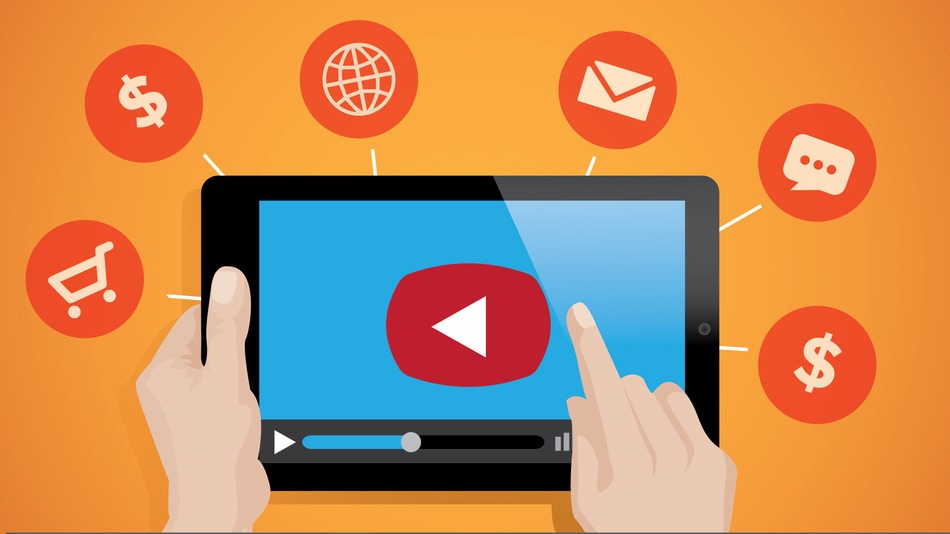Marketing shouldn’t be about “sell, sell, sell,” but about providing something compelling. It is less to do with “telling people what to do, but more to do with giving them something, whether it is an emotional reaction and connection, or something educational.
They say that 90% of the battle is in the titles of your marketing content. I would take that a step further and say that it is not only in capturing the attention, but also “speak to the heart to move the mind.” This is the essence of compelling content and storytelling, and video is at the forefront of that movement.
Video as an electronic method of recording and displaying visual media is relatively young (circa 1950s), digital video even younger, but the way in which moving pictures and visual narratives captivate and move us has endured since the 1800s (3, Heroes Guide). In fact, our love affair with visual media has increased now that the technologies for producing video content has not only become increasingly accessible, but easily distributed, shared, and consumed now that video is available “on-demand” and live.
Video has become so essential to our digital and social landscape that Hootsuite, one of the world’s foremost social media management platforms, now integrates with the video features of more than 8 social and video hosting platforms: YouTube, Facebook, Instagram, Twitter, Vimeo, Dailymotion, Social Files, and Vidyard.
This is a huge advancement that has been lacking for video marketers.
So here are our 4 big takeaways from Hootsuite’s Webinar, “Video Goes Social: Why video marketing matters—and how to do it right.”

1. Video Has Gone Social
Now that each major social platform offers native video uploading and sharing, it has dominated the landscape. Let’s look at Facebook as an example since it is one of the biggest social platforms with more than 1 billion users.
Facebook’s Q3 report for 2015 boasted the following:
- 8 billion video views
- 500 million people watching video daily
- 1.5 million small business posting video, including video ads.
With stats like these, it is clear that Mark Zuckerberg understands the value in video, and will be integrating video further into the social platform.
“Over the next few years, video is going to be some of the most engaging content online, and by continuing to innovate here, we have a chance to build the best place to watch and share videos”. [1]

2. People Love Video
The fact that the majority of Internet traffic (an estimated 80% by 2019) is due to video should say enough, but here are some fascinating stats worth sharing from Hootsuite:
- 100 million hours of video watched daily on Facebook.
- Tweets with video have 2.5x more replies, 2.8x more retweets, and 1.9x more likes
- 25% of shoppers say they’ve used YouTube to search for a video related to a product.
- Shoppers who view video are 1.81 times more likely to purchase.
Video is like the graham cracker of marketing, and who doesn’t love graham crackers?
Blogging and e-mailing is like chocolate and marshmallows.
They are great on their own but together, they create s’mores! What’s that you say?
Where are the crunchy graham crackers? Video.
Video is the graham cracker in this melty equation.
~Jade, Lyfe Marketing
3. Video Platforms = Engagement Platforms
The foundation of your video marketing efforts should start with understanding people because no matter what industry you are in, whether B2B or B2C, you are in the business of “People to People.”
I think that this is the most valuable part of video on social. Social has brought two way interaction to the Internet but video has made social more human. Video is the closest thing to the human experience – when you hear a good story, watch a film, learn something, there is always a conversation that precedes it.
~ Parick Gilloly, Director of Digital Communications and Social Media, Monster.com
Because of the social application of video, and the way in which video and other content are being consumed, the traditional 30 second ad format is dying. That’s not to say that it does not have value or a place, but what is needing to happen, is for businesses not only to customize their video content to each social channel, but to integrate video into their customer journey and marketing strategy.
Sharing, commenting, liking, and other engagements are a part of the social environment. With that comes some important questions to ask as you plan your video content:
“Why will people share this?”
“What is in it for them?”
“What does this video mean about them?”
“How does it define them?”
“Finally, what it means for your brand.”
This means that we need to look past “view counts” as the single most important metric, and post and pray tactics, and begin to look at video holistically as an integrated part of your marketing strategy. A high view count does not mean that those views are converting. Just as your customer will have different needs and goals in their journey so will your video content.
If your video content is integrated into your marketing strategy, and throughout the customer’s journey, you can begin to look at other metrics. For example, in the cited webinar, Parick Gilloly, Director of Digital Communications and Social Media at Monster pointed out that although they monitored view counts, their most important metric was engagment. With each video they uploaded, they participated in the comment section and community with other users.
4. A Tool to Unleash the Power of Story

We can get lost in the growth, stats, and technology, let’s make sure that we remember that video is one of the best ways that we can connect with our audience in an authentic way, and really unleash the power of storytelling…I think that the power of video to tell stories linked with these new distribution channels is why I am so excited for the potential for marketers, and why we are so excited about it here at Hootsuite.
Cameron Uganec, Senior Director, Growth Marketing & Education, Hootsuite
The greatest strength video marketing and storytelling brings to your sales and marketing strategies is their ability to really show the “ultimate value” of something. Patrick Gilloly relied on this heavily for Monster’s “Find Better” video series. He explained that they wanted to expose the ultimate value proposition of Monster (finding a job), not necessarily just the process they enable (search, apply, celebrate). They did this by telling stories of people who have found jobs they love. I think they masterfully used story in these cases, especially the story Allie Knight.
At Jelly, we are excited to be able to include video marketing in our digital and PR strategies for local business. Curious? Let’s grab a coffee, craft beer, or smoothie and let’s chat.
Categories:
Uncategorized
Tags:



